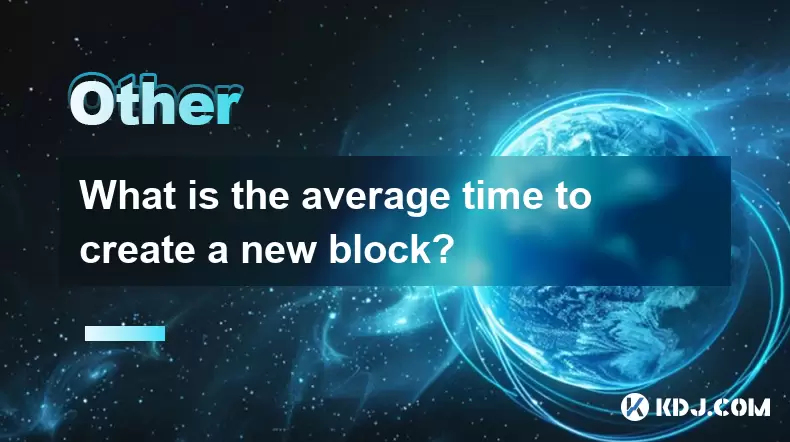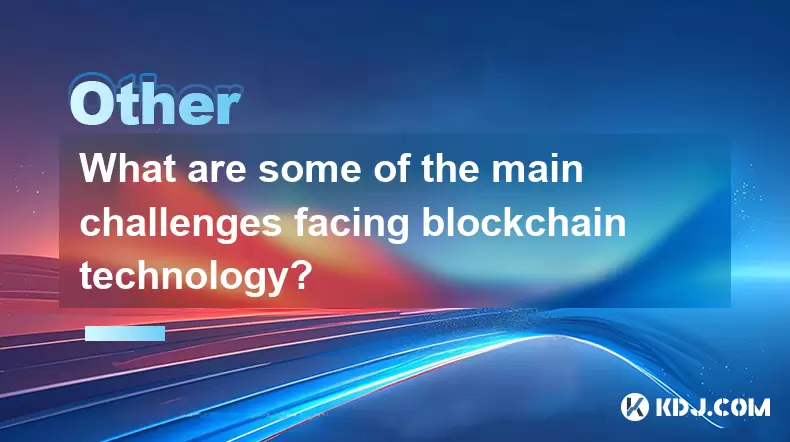-
 Bitcoin
Bitcoin $117300
1.99% -
 Ethereum
Ethereum $3884
5.89% -
 XRP
XRP $3.268
9.33% -
 Tether USDt
Tether USDt $1.000
0.02% -
 BNB
BNB $783.0
1.78% -
 Solana
Solana $173.6
3.51% -
 USDC
USDC $0.9999
0.00% -
 Dogecoin
Dogecoin $0.2193
7.00% -
 TRON
TRON $0.3380
0.30% -
 Cardano
Cardano $0.7769
5.08% -
 Stellar
Stellar $0.4350
9.36% -
 Hyperliquid
Hyperliquid $40.23
5.78% -
 Sui
Sui $3.739
6.95% -
 Chainlink
Chainlink $18.30
9.46% -
 Bitcoin Cash
Bitcoin Cash $581.7
2.11% -
 Hedera
Hedera $0.2577
5.51% -
 Ethena USDe
Ethena USDe $1.001
0.00% -
 Avalanche
Avalanche $23.08
4.23% -
 Litecoin
Litecoin $121.7
2.24% -
 UNUS SED LEO
UNUS SED LEO $8.962
-0.34% -
 Toncoin
Toncoin $3.332
1.36% -
 Shiba Inu
Shiba Inu $0.00001273
3.39% -
 Uniswap
Uniswap $10.35
6.84% -
 Polkadot
Polkadot $3.818
4.01% -
 Dai
Dai $1.000
0.01% -
 Bitget Token
Bitget Token $4.446
2.13% -
 Cronos
Cronos $0.1491
4.96% -
 Monero
Monero $255.4
-9.78% -
 Pepe
Pepe $0.00001099
4.80% -
 Aave
Aave $284.0
8.01%
can blockchain be used in healthcare
Blockchain empowers healthcare by enabling secure and auditable medical records, streamlined drug supply chain management, reliable clinical trial data, personalized medicine, and interoperable healthcare systems.
Oct 12, 2024 at 02:35 pm

Can Blockchain be Used in Healthcare?
Blockchain technology is transforming various industries, including healthcare. Here are some specific examples of how blockchain is currently being utilized within healthcare:
- Secure Medical Records: Blockchain enables the creation of secure and immutable medical records. These records can be easily shared between patients, providers, and researchers while maintaining privacy and integrity.
- Drug Supply Chain Management: Blockchain can track the movement of drugs throughout the supply chain, from manufacturers to dispensaries to patients. This enhances transparency, reduces the risk of counterfeiting, and improves patient safety.
- Clinical Trial Data Collection: Blockchain ensures the integrity and authenticity of clinical trial data, increasing data reliability and enhancing research outcomes.
- Personalized Medicine: Blockchain supports the development of personalized medicine by providing a secure platform for sharing patient data and creating tailored treatment plans.
- Interoperability: Blockchain facilitates the interoperability of healthcare systems, allowing seamless data exchange between different providers and stakeholders.
Benefits of Blockchain in Healthcare:
Utilizing blockchain in healthcare offers several key benefits:
- Enhanced Security: Blockchain's decentralized and encrypted nature protects medical data from breaches and unauthorized access.
- Improved Efficiency: Automated processes on the blockchain streamline administrative tasks, reducing paperwork and saving time for healthcare providers.
- Increased Transparency: Blockchain provides a transparent and auditable record of transactions, fostering trust and accountability.
- Patient Empowerment: Patients gain control over their medical records, empowering them to make informed decisions about their healthcare.
Future Potential of Blockchain in Healthcare:
The potential applications of blockchain in healthcare are vast and continue to expand. Some promising future use cases include:
- Precision Medicine: Blockchain-enabled genomic data sequencing will advance precision medicine by allowing tailored treatments based on an individual's genetic profile.
- Telemedicine: Enhanced telemedicine services will be enabled by blockchain, allowing patients to securely access remote medical consultations and monitor their health remotely.
- Healthcare Insurance: Blockchain will transform healthcare insurance by facilitating more efficient claims processing, reducing fraud, and providing a secure platform for managing insurance data.
Conclusion:
Blockchain technology holds significant promise for revolutionizing healthcare by enhancing security, improving efficiency, fostering transparency, and empowering patients. As the technology continues to evolve, its applications in healthcare are expected to expand, leading to improved healthcare outcomes and enhanced patient experiences.
Disclaimer:info@kdj.com
The information provided is not trading advice. kdj.com does not assume any responsibility for any investments made based on the information provided in this article. Cryptocurrencies are highly volatile and it is highly recommended that you invest with caution after thorough research!
If you believe that the content used on this website infringes your copyright, please contact us immediately (info@kdj.com) and we will delete it promptly.
- Cold Wallet Crypto in 2025: The Future is Now, Ya'll
- 2025-08-08 05:10:13
- MAGACOIN, SOL, and ADA: A Tale of Shifting Tides in Crypto
- 2025-08-08 05:10:13
- SHIB Price, PEPE, and the Memecoin Supercycle: Who Will Reign Supreme?
- 2025-08-08 05:50:12
- Pudgy Penguins Price Prediction: Google Trends & Breakout Signals
- 2025-08-08 05:50:12
- UAE Crypto Regulation: SCA and VARA Unite to Streamline the Future of Digital Assets
- 2025-08-08 05:55:48
- MAGACOIN Finance: The Presale Phenomenon Rocking the Crypto World
- 2025-08-08 05:55:48
Related knowledge

What is the purpose of a nonce in mining?
Aug 04,2025 at 05:56pm
Understanding the Role of a Nonce in Cryptocurrency MiningIn the world of cryptocurrency mining, the term nonce stands for 'number used only once.' Th...

Can data on a blockchain be deleted?
Aug 05,2025 at 04:00am
Understanding Blockchain ImmutabilityThe core principle behind most blockchain systems is immutability, which means that once data is recorded onto th...

What is the difference between on-chain and off-chain transactions?
Aug 02,2025 at 04:22pm
Understanding On-Chain TransactionsOn-chain transactions refer to digital asset transfers that are recorded directly on a blockchain ledger. These tra...

What is the average time to create a new block?
Aug 06,2025 at 09:21pm
Understanding Block Creation in Blockchain NetworksThe average time to create a new block varies significantly depending on the specific blockchain pr...

How are blocks linked together?
Aug 04,2025 at 06:56am
Understanding the Structure of a BlockchainA blockchain is a decentralized digital ledger composed of a sequence of blocks, each containing a list of ...

What are some of the main challenges facing blockchain technology?
Aug 07,2025 at 02:58am
Scalability Constraints in Blockchain NetworksOne of the most persistent challenges in blockchain technology is scalability. As blockchain networks gr...

What is the purpose of a nonce in mining?
Aug 04,2025 at 05:56pm
Understanding the Role of a Nonce in Cryptocurrency MiningIn the world of cryptocurrency mining, the term nonce stands for 'number used only once.' Th...

Can data on a blockchain be deleted?
Aug 05,2025 at 04:00am
Understanding Blockchain ImmutabilityThe core principle behind most blockchain systems is immutability, which means that once data is recorded onto th...

What is the difference between on-chain and off-chain transactions?
Aug 02,2025 at 04:22pm
Understanding On-Chain TransactionsOn-chain transactions refer to digital asset transfers that are recorded directly on a blockchain ledger. These tra...

What is the average time to create a new block?
Aug 06,2025 at 09:21pm
Understanding Block Creation in Blockchain NetworksThe average time to create a new block varies significantly depending on the specific blockchain pr...

How are blocks linked together?
Aug 04,2025 at 06:56am
Understanding the Structure of a BlockchainA blockchain is a decentralized digital ledger composed of a sequence of blocks, each containing a list of ...

What are some of the main challenges facing blockchain technology?
Aug 07,2025 at 02:58am
Scalability Constraints in Blockchain NetworksOne of the most persistent challenges in blockchain technology is scalability. As blockchain networks gr...
See all articles

























































































